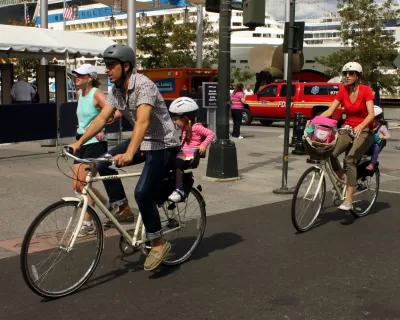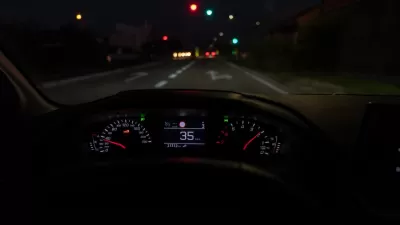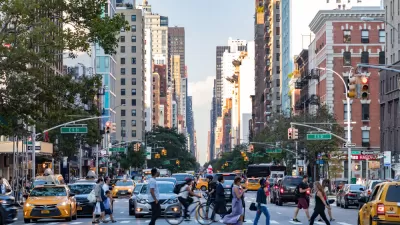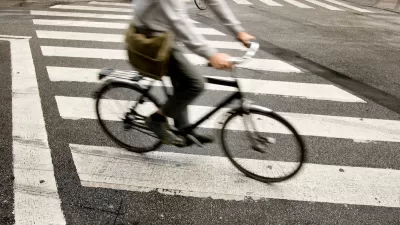New York City will create green waves by adjusting traffic signals to keep cyclists moving, even when drivers will have to slow down.

Winnie Hu reports on plans in New York City to retime traffic signals to give cyclists priority. The strategy will recalibrate signals for cyclists, who travel about 10 to 15 miles per hour, by giving them a series of green lights and stopping drivers traveling above 15 miles per hour.
"New York’s experiment with what has been called a green wave is part of a global movement to make urban streets more welcoming to bikes, even as the country’s streets have become more dangerous," writes Hu. With a green wave system in place, traffic also runs more smoothly and the potential for crashes decreases as cyclists and motorists stop speeding up to try to beat red lights.
Copenhagen was the first city to adapt the concept of the green wave for biking. In the United States, traffic signals have been adjusted on streets in San Francisco, Chicago, and Portland, Oregon. New York City had implemented a green wave on a small segment of a Brooklyn roadway and plans to expand it to other streets in Brooklyn, Manhattan, and Queens.
FULL STORY: After Cyclist Deaths, City Adjusts Traffic Lights to Slow Cars

Planetizen Federal Action Tracker
A weekly monitor of how Trump’s orders and actions are impacting planners and planning in America.

DARTSpace Platform Streamlines Dallas TOD Application Process
The Dallas transit agency hopes a shorter permitting timeline will boost transit-oriented development around rail stations.

Four Reasons Urban Planners Can’t Ignore AI
It’s no longer a question of whether AI will shape planning, but how. That how is up to us.

Texas State Bills to Defund Dallas Transit Die
DART would have seen a 30% service cut, $230M annual losses had the bills survived.

Bikeshare for the Win: Team Pedals to London Cricket Match, Beats Rivals Stuck in Traffic
While their opponents sat in gridlock, England's national cricket team hopped Lime bikes, riding to a 3-0 victory.

Amtrak’s Borealis Exceeds First Year Ridership Expectations
205,800 passengers have boarded the St. Paul to Chicago line, well above initial MDOT projections.
Urban Design for Planners 1: Software Tools
This six-course series explores essential urban design concepts using open source software and equips planners with the tools they need to participate fully in the urban design process.
Planning for Universal Design
Learn the tools for implementing Universal Design in planning regulations.
City of Mt Shasta
City of Camden Redevelopment Agency
City of Astoria
Transportation Research & Education Center (TREC) at Portland State University
US High Speed Rail Association
City of Camden Redevelopment Agency
Municipality of Princeton (NJ)





























